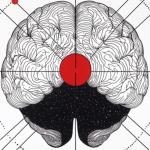I want to say a few things about the language found in Chapter 4 of the Gospel of Truth (GoT) regarding the interaction between Christ and those who “discover him in themselves” even as he “discovered them in himself.”
This language speaks to the paradox of separation and oneness. Our discovery of Christ within ourselves and Christ’s discovery of us in him, or of Jesus’s discovery of both the Christ and us in himself [and vice versa], is crucial to understanding the text.
As we see in the Gospel of Thomas, there is no “inside or outside” or “upper or lower” or “male or female” or any other form of separation. Those are illusions which prevent us from seeing the reality of our shared Divinity and Humanity in the Christ.
The GoT uses the metaphor of the body of Jesus being “nailed to a tree” to become “the fruit of the Father’s knowledge” as a way to explain how we “come into being” and “find contentment within [this] discovery” of our shared Divinity and Humanity.
This is when both Jesus and those who engage in a Eucharistic “eating of his flesh” discover themselves within one another and it’s also when we discover the Father, “the uncontainable [and] the unknowable Father…who is full and made all things.”
In other words, there are two awakenings here – the one Jesus experiences of us in himself, and the one we experience of Jesus [or the Christ] in us. But there is another awakening of ourselves to the reality that this Divine connection also reveals the “unknowable” and “uncontainable Father” within all of us.
This is why, in Chapter 5, the author of this Gospel feels the need to explain that “(although) he kept their fullness within himself…the Father was not jealous.” Because our fullness was in Christ, and this fullness was kept within him.
Why? Because, as he says, “For if the generations had received their fullness, they would not be able to come to the Father. [So], he kept their fullness within himself, giving it to them to bring back to him with full, unified knowledge.”
What’s in play here is a sort of dance where our lack of fullness leads us to seek fullness and that fullness is found only in Christ, whose fullness is found in us. Does that make sense? He’s suggesting that the fullness we desired was what led us to Christ and that, in turn, led us to receive our fullness in Christ and, therefore, also the Father.”
Our forgetfulness is what leads us to seek the answers, and that searching is what leads us to find the Answer which was within us all along; his fullness is us, and our fullness in Christ which is the same fullness of the Father “who is full and made all things.”
Chapter 5 ends with this beautiful retelling of what Jesus accomplished and why:
“He became a guide, at rest and at leisure. He came into their midst and spoke a teacher’s words in places of learning. Those thinking themselves wise tested him, but he reproached them because they were empty and hated him for they were not truly wise. After all these, the little children came – those to whom knowledge of the Father belongs. When they had been strengthened, they learned about the Father’s face. They knew and they were known, they were glorified and they glorified.”
So, the wise were unable to see the Father’s face because they were seeking a wisdom of intellect [epistime] which leads to pride and the inflation of the Ego which leads to separation. However, the little children are the ones who come to Jesus and they know [ginosko] the Father which is expressed beautifully as the simple reality of gazing upon the loving face of the Father which leads them to know and to be known in ways that transcend knowledge and intellect.
**

The newest book from Keith Giles, “The Quantum Sayings of Jesus: Decoding the Lost Gospel of Thomas” releases TODAY on Amazon. Order HERE>
Keith Giles is the best-selling author of the Jesus Un series. He has appeared on CNN, USA Today, BuzzFeed, and John Fugelsang’s “Tell Me Everything.” He co-hosts The God Squad Podcast, and the Heretic Happy Hour Podcast.



















